Types of birches and their description

Birch has rightfully received the status of a "Russian" tree. It is found in all regions of the country. There are many species belonging to this genus. Some of them are used to decorate parks and squares, others are often found in the wild. Each variety has certain external features and other characteristics.
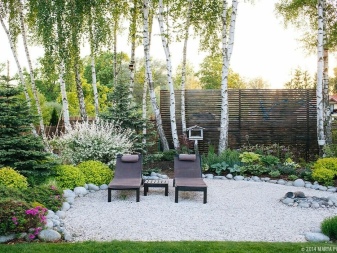
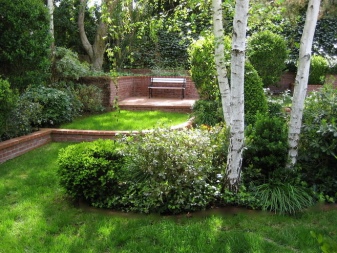
Features of the tree
Birch is easily recognizable by its light bark with black markings, but not all varieties from this family have this feature. The root system can also be very different. In arboreal forms, it is large and massive, going deep into the ground. Branched roots lying on the surface of the earth are characteristic of artisanal species.
Bark shades range from light, almost white, to red and brown. Foliage varies in size and color, but most species have small teeth at the ends of the leaves. Their average width is about 5 centimeters, the surface is flat and smooth. With the arrival of spring, the branches are covered with sticky leaves. With the arrival of autumn, they turn yellow and crumble.
The tree blooms with catkins covered with pollen.
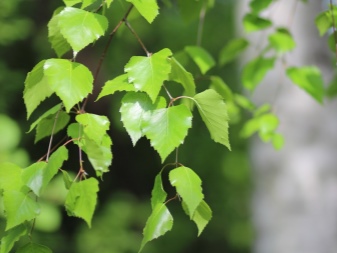
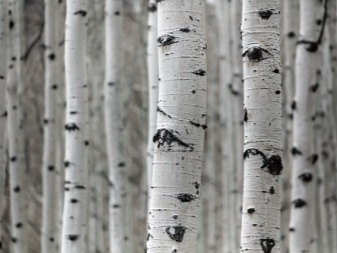
Birch is very important for the forest ecosystem or planting. It is home to many species of insects, including caterpillars. Also, many types of useful mushrooms grow near its trunk: brown birch, russula, milk mushroom, porcini mushroom and others. Representatives of this family are distributed not only in Russia and neighboring countries. They can be found in Europe, Asia and North America.
All types are divided into two large groups.
- Trees, the height of which varies from 20-30 to 50 meters. The trunk diameter can be up to one and a half meters.
- Shrubs are more compact in size.
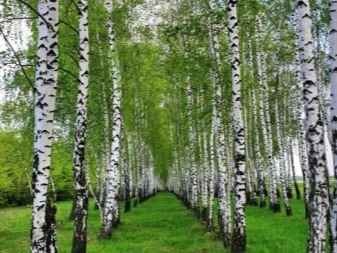
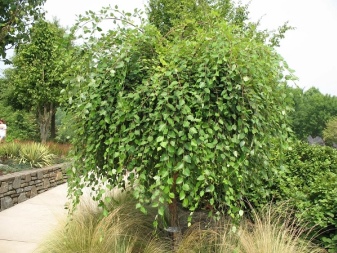
Don't forget about the industrial sector.
- Birch is famous for its beautiful and strong wood. Due to its high strength index, it is used for the manufacture of plywood, furniture and finishing materials.
- Tar has found its application in cosmetology and medicine. The substance is obtained from wood by dry distillation.
- By processing foliage, a natural yellow dye can be obtained.
- During flowering, birch attracts many bees. Pollen-bearing plants are important for honey production.
- The top layer of bark, called birch bark, is often used as a combustible substance. He also found his application in needlework.
- Birch sap is good for health, and is also the main component for the preparation of syrups and decoctions. Beekeepers often feed them bees.
- Birch leaves, buds and branches have found their application in medicine. They are used to make bactericidal, diuretic and other agents.
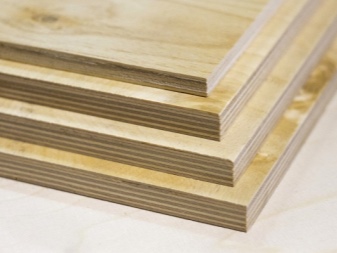

What are the decorative varieties and types?
Cherry
The tree reaches up to 25 meters in height. It is also called the North American birch. Young trees can be identified by their pyramid-shaped crown. Over time, the branches begin to descend, and the crown becomes like a ball. The bark is colored in a dark and dense color (cherry tint with a red tint).
The foliage is large, up to 12 centimeters in length. With the arrival of spring, the branches are covered with a large number of earrings. In comfortable climatic conditions, the tree lives for a long time. This species prefers moist soil.


Red-leaved
The birch got this name due to the original color of the foliage. Glossy leaves are colored purple or burgundy, which does not change throughout the season. The average tree size is 7 meters. It perfectly tolerates frosty weather and is not demanding on the composition of the soil. The tree grows very slowly. He needs bright sunlight.

Curly
The view with a lush and dense crown reaches a height of 10 to 15 meters. The variety got its name due to the original configuration of the branches. The leaves are diamond-shaped and glossy.
Due to its original appearance, it is often used as a decoration for a park, square or local area.
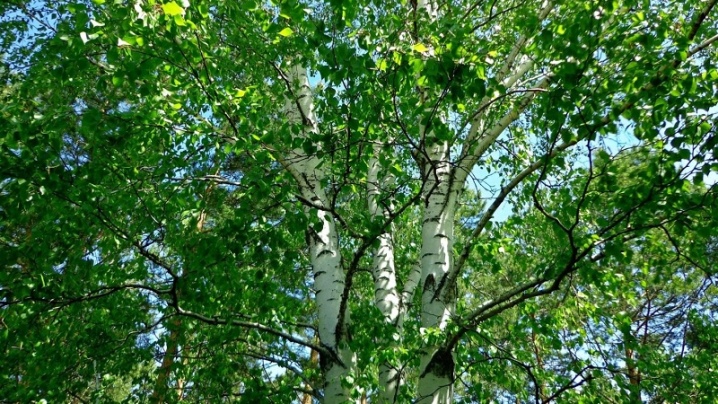
Chinese
This variety retains its high decorative qualities for 40 years. The flowering period starts in late April and lasts until the next month. With the onset of August, the tree begins to bear fruit (fruits in the form of nuts). Chinese birch easily tolerates frost and drought. The size of the leaves varies from 2 to 5 centimeters. The shape is ovoid. The tree grows best in moist and fertile soil.
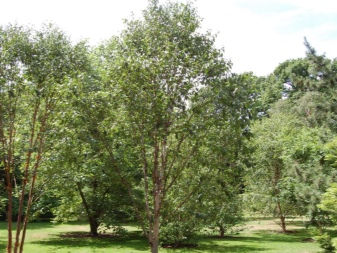
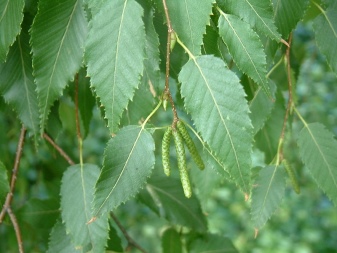
Flat-leaved
Flat-leaved birch, also called Asian or Japanese, can be identified by its light gray bark without dark markings. The shape of the leaves combines a triangle and an oval. The color is rich green. The maximum barrel height is 30 meters.
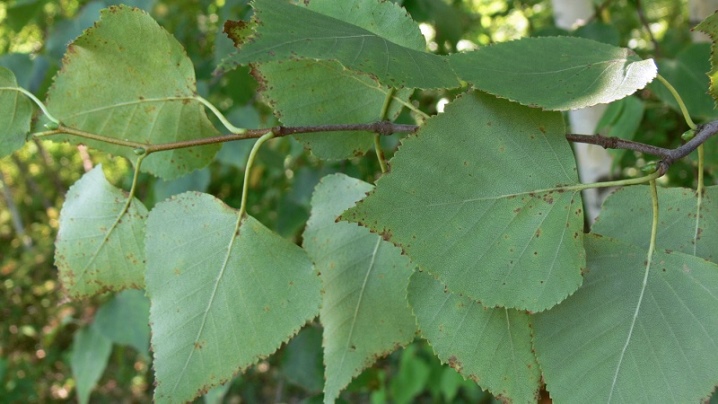
Yellow
Yellow or ribbed birch is large in size. The maximum height is 30 meters. This species came to us from North America, which is why the variety is often called American. The color of the bark can be different: gray, orange, brown with a red tint. Branches cover large leaves up to 12 centimeters in size. Some trees live up to 300 years. The variety prefers drained and moist soils.

Squat
Shrub birch, the height of which cannot be higher than 2.5 meters. In the wild, this species is often found in the swamps of Siberia and the Far East. It can also be found in the central region of Ukraine. Oval leaves are covered with resinous warts. Flowers appear on branches along with leaves in the last month of spring. The kidneys are omitted.
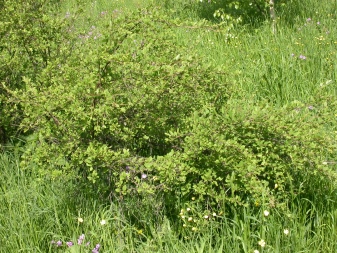

Dangling
This is the most common variety in Russia. The name in Latin is Betula pendula. This species can reach up to 30 meters in height. The bark is light and even. In young trees, it can exfoliate. On old birches, deep gray furrows are noticeable. The flexible trunk is surrounded by drooping and long branches. They acquire this form only in old age. Young birches have straight branches. The leaves are wedge-shaped.
This variety lives for a long time, from 100 to 120 years. Upon reaching the age of eight, the tree becomes "adult" and the color of the bark changes from rich brown to white. Hanging birch can be found in the forest, steppe and even tundra. The tree has found its application in many economic activities.
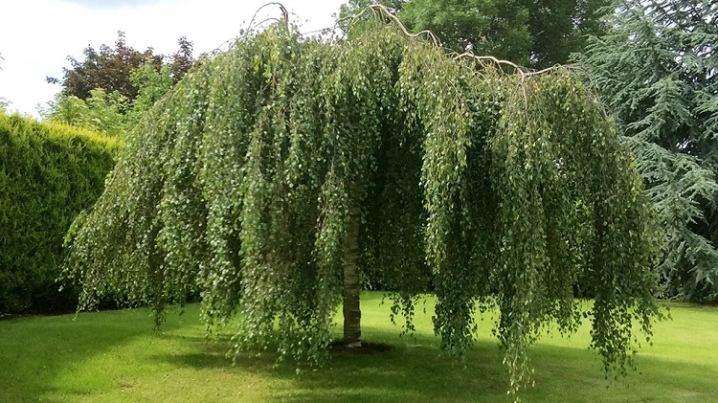
This also includes the following types.
- Hanging birch "Royal frost". A tree with high decorative qualities. The leaves are painted dark purple. The thin white trunk grows up to 20 meters in height.

- "Fastigiata". Tall trees growing in the shape of a candle. The branches are directed upwards. The color of the leaves is bright green. The crown width can be up to 5 meters. The height is about 20 meters.
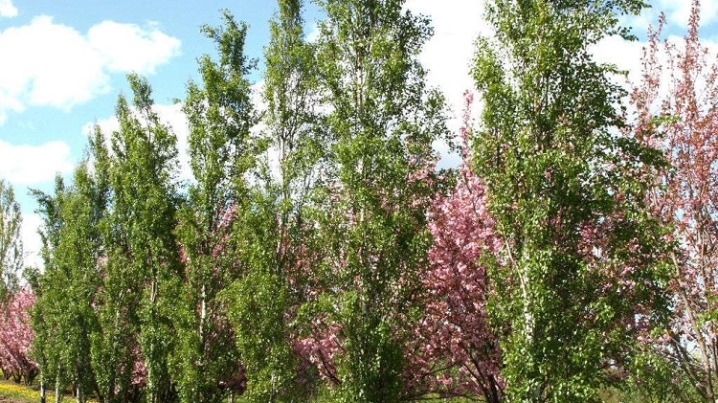
- Laciniata. A tree with long, flexible branches hanging down. This variety attracts attention with its unusual shape of leaves, reminiscent of maple. Their color is deep green. The trunk is white with black markings.

Useful
Useful or Himalayan birch, also called "Zhakmana". It is not demanding on the composition of the soil and grows up to 10 meters. For full development, the tree needs sunlight. Useful birch does not tolerate shade well, but is not afraid of frost. The shape of the crown is spreading. The length of the leaves varies from 6 to 10 centimeters. The color of the leaves is bright green.
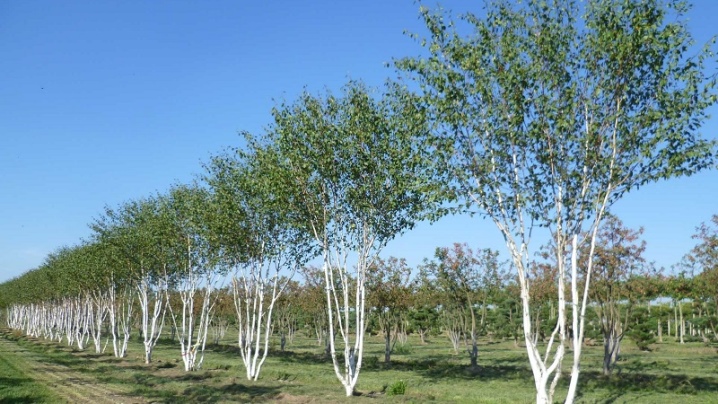
Radde
This is a rare species that is listed in the Red Book. The color of the bark can be white or pinkish. The small tree reaches 7 meters in height. The color of thin branches is brown, dark. In young birches, the color of the branches is yellow. This type of wood boasts strength and resilience. The species is not picky about the soil and quickly adapts to any weather conditions. The color of the leaves is deep green.

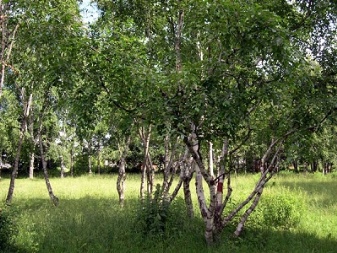
Other
Nana
The Nana cultivar can be identified by its fuzzy shoots. The leaves are 2 to 2.5 cm in diameter and have a round shape. Such birches are often found in Asian countries, as well as in the Alps and Greenland.
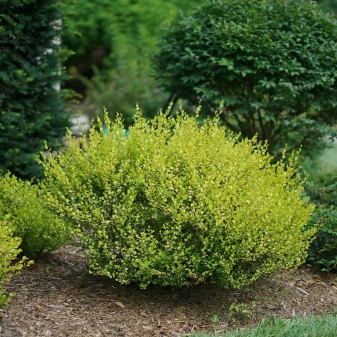
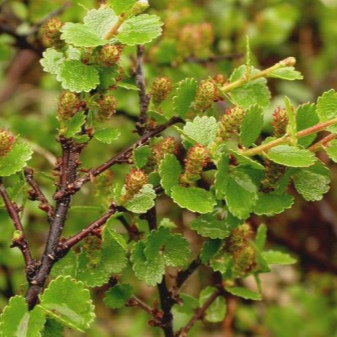
Golden Treasure
Shrub birch of compact size. The openwork leaves are colored yellow. Due to its unique and attractive appearance, designers value this look highly. Shoots are slightly raised. This is a multi-stemmed and spreading birch with a lush crown. This is a very rare species that every year adds 10 centimeters in height. The flowering period falls in the last month of spring.
Prefers moderate humidity. The composition of the soil does not matter.

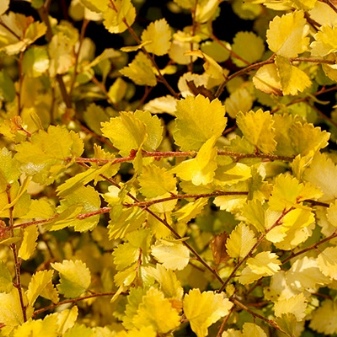
Swamp
This species is also called undersized or undersized birch. Its maximum height reaches 5 meters. The branches grow straight up. The white bark darkens with age, acquiring a dark gray tint. The foliage is ovoid. The length of the leaf is up to 5 centimeters. The surface is covered with fine fibers. During flowering, the tree is covered with green catkins with a yellow tint. The species feels great in dry and wet soil. Swamp birch does not tolerate frost well and needs abundant lighting.

Sinuous
It is a neat and small tree that rarely grows taller than 6 meters. The tree attracts with its unusual trunk shape. It is twisted, due to which the variety got its name. Birch can often be found on the territory of the Omsk region. This species is very similar to the fluffy birch, but differs in rounded and more compact foliage. The color of the bark can be different: white, gray or brown.

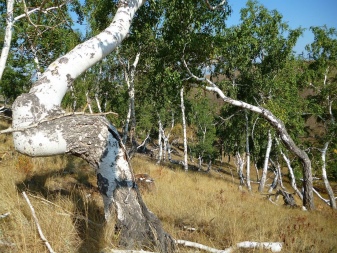
Far Eastern
A very hardy tree that is not afraid of the vagaries of the weather. An even trunk holds a spreading crown. The birch reaches a height of 30 meters. This species tolerates shade well, and young trees need shading for full growth. The bark is white with a slight yellow tint. Dense oval foliage. The tree can live up to 100 years.
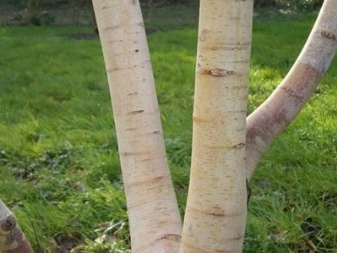

Manchu
Another species from the birch family, the maximum height of which reaches 15 meters. It blooms with catkins, collected in inflorescences of 2-4 pieces. The catkins are covered with fine yellow pollen. The flowering period lasts from April to May. This pollen-bearing species is highly valued in the honey industry.
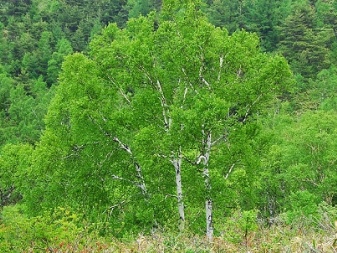
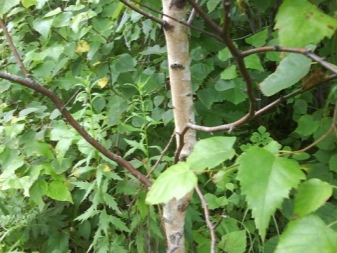
Warty birch
In Latin, its name sounds like Betula verrucosa. This tree is characterized by a lush and delicate crown. The root system is well developed. The variety reaches a height of 20-30 meters. Young branches are brown-red and covered with resinous warts. The light bark is even and smooth. At the base, the trunk is painted dark gray or black. Many varieties of birches grow on the territory of Russia.
Species with round and carved leaves, elongated and round crown, white and colored bark are found in natural conditions, as well as in artificially created parks. They differ not only in appearance, but also in other characteristics.
For example, Siberian birch wood is often used in the lumber industry. Also, original crafts are made from it.
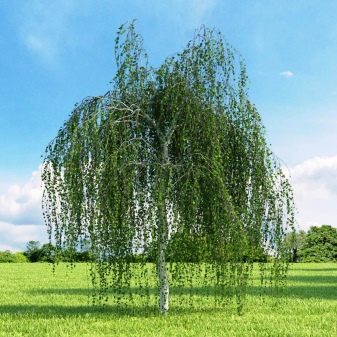
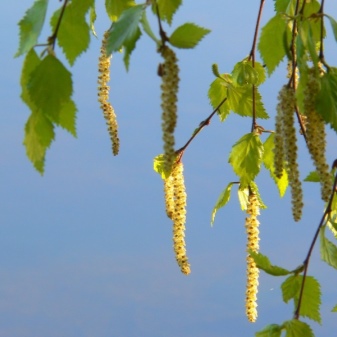
The rarest species
Purple
The growth of the Pendula Purpurea birch varies from 10 to 15 meters. The crown is narrow, but loose. Its width ranges from 4 to 5 meters. The trunks of young trees are colored brown with a red tint. As it grows older, it darkens to a dark gray or even black color. At the base, the bark remains whitened. The branches are covered with small leaves 2 to 3 centimeters long.
In early spring, the leaves have an original purple color, and with the arrival of autumn they change their color to red, brown or bronze. In some cases, shoots with green foliage may appear. It is better to remove them. The species tolerates winter frosts and loves sunlight. The composition of the soil can be any.Due to its high decorative qualities, it is often used in landscape design. Experts recommend planting this variety in small groups, 2-3 pieces each.

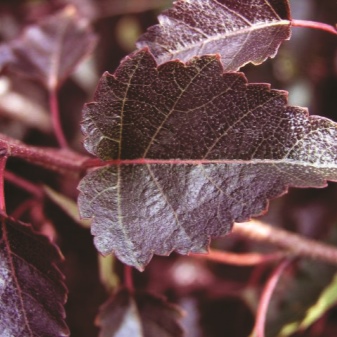
Maksimovich
Another rare species that belongs to tall. The maximum height reaches 30 meters with a minimum value of 25 meters. Grows well in light soils... Birch tolerates frost without problems and loves sunlight. The trunk diameter reaches more than one meter. The leaves are large. The shape is rounded or slightly elongated.
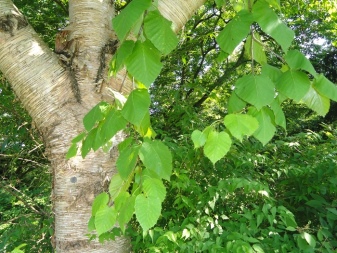
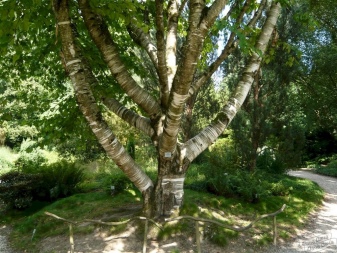
Red
This species got its name due to the special color of the bark. The hue can range from red to yellow and even gray. The compact tree grows only 5 meters. Today, this species is threatened with complete extinction. Now the tree can be found only in Kazakhstan.
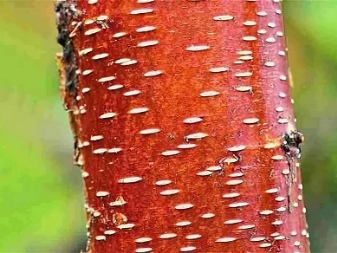
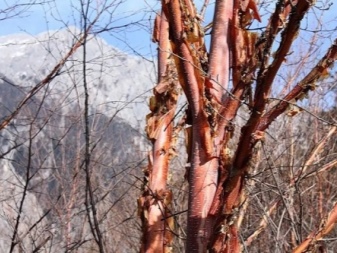
Korean
Grows up to 25 meters. In some sources this species is called "black birch". In the wild, it grows in the Far East, China, Korea, Japan and Mongolia. Leaves of a standard oval shape are colored in a dense green shade. Wood is used to make coal or handicrafts. Korean birch grows remarkably well in humid environments. She also loves sunlight.
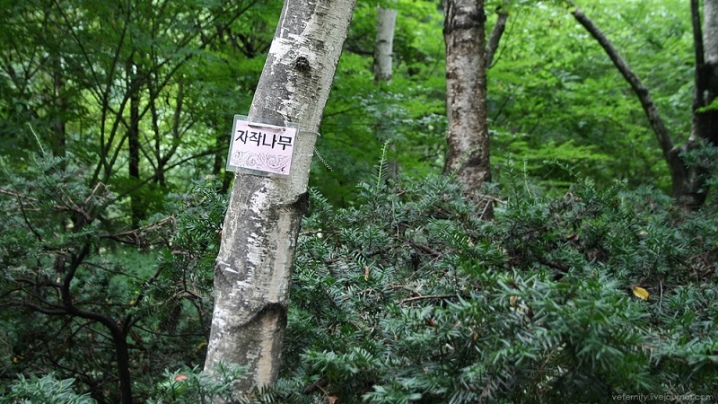
Dalecarlian
This tree captivates with its expressive appearance. Long and flexible branches are covered with thin and neat leaves. Birch is often found in Russia and on the territory of the Scandinavian Peninsula. She is not afraid of frost and other vagaries of the weather. The height of the tree varies from 10 to 20 meters. In favorable conditions, the tree lives up to 150 years. Zand a year the tree grows 35 cm.The average trunk diameter is 60 cm.
This type is great for landscaping parks, gardens and other areas.
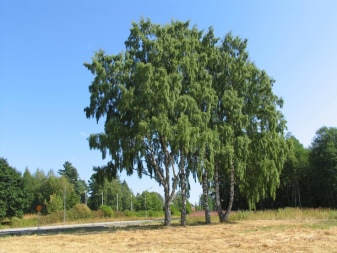
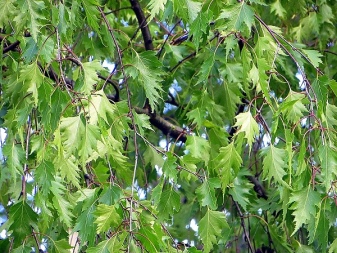
Daurskaya
Daurian birch lives for about 100 years. During this time, it grows up to 25 meters. The species is very picky about the composition of the soil and loves light. The trunk diameter is 0.5 meters. Leaves of a standard oval shape. Under natural conditions, birch can be found on river banks, drained slopes and rivals. The branches are spread wide. The barrel is painted dark gray or black.
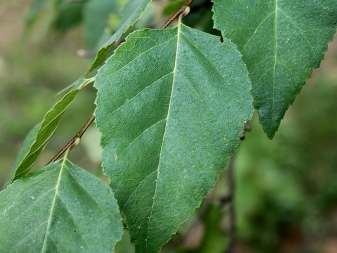
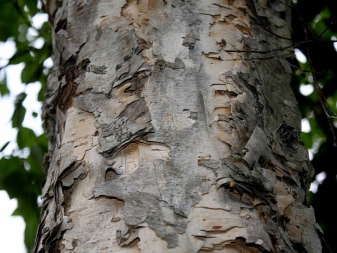
How to choose for a garden?
Many species of the birch family are perfect for decorating a house plot or other territory. Trees remain attractive throughout the season. Some varieties change the color of the leaves several times a year. You can also select varieties that change the color of the bark as they mature. Low or tall, spreading or elongated, with standard or unusual colors of foliage and bark - different varieties look attractive on the site. During flowering, the trees captivate with their lush color and delicate aroma.
In the warm season, birch trees add splendor and brightness to the landscape. As soon as autumn comes and the leaves change colors, the garden becomes vibrant and charming. In order to create a peaceful atmosphere, it is recommended to opt for trees with green foliage. Many designers choose birches with thin and drooping branches that gently sway in the wind. A low birch creeping with branches on the ground will look great both as a single element of the landscape, and in composition with other plants.
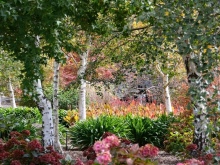
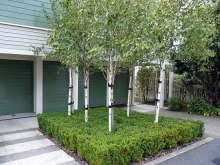
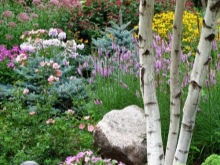
Before choosing a birch variety for your garden plot, you need to carefully study the multiple species, compare their features and characteristics. Some varieties tolerate frost remarkably well, so they can be planted in the northern regions. Others love abundant sunlight, which is why they should only be planted in an open area. If you want a tree to attract a large number of bees, opt for pollen-bearing varieties.
Be sure to pay attention to the size of the tree. These are the height, trunk diameter and crown width. Tall varieties are often planted in spacious areas. They will also look great along the coast or boulevard.For small gardens or private areas, it is best to choose compact trees that will look great in small groups of several.
You should also take into account the composition of the soil and the level of moisture. Some varieties are unpretentious to the type of soil and are great for landscaping any territory. Others only grow in certain types of soil.
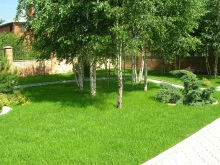





































































The comment was sent successfully.